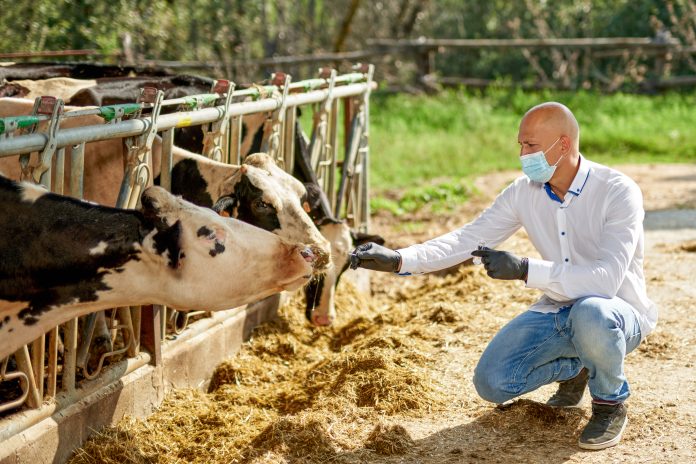Rick Clayton, Technical Director, AnimalhealthEurope, in the final chapter of this three-part series, examines the benefits of benchmarking regulatory systems and promoting Good Regulatory Practice
Part 1 of this 3-part series explored the importance of Benchmarking Regulatory systems in different jurisdictions and over time, to support informed policymaking by measuring how well the legislation and regulatory processes meet a set of policy objectives. The HealthforAnimals Global Benchmarking Survey of regulatory systems governing veterinary medicines, which has run every five years since 1996 and now covering 11 countries (or regions), was used to illustrate the concept. Benchmarking is valuable for comparing best regulatory practices against a national agency’s practices to identify what is working well and where effort should be focussed to bring improvements.
In the second article, some key metrics and recommendations from the HealthforAnimals Global Benchmarking Survey 2020 were reported. Benchmarking was seen as an important first step towards increasing global regulatory convergence in a world of increasing globalisation, in part driven by the need for improved efficiencies and effective use of resources, both within regulatory agencies and industry. Sharing information on good regulatory practice, working towards regulatory convergence, participation in international regulatory harmonisation initiatives (e.g. VICH) (1) and establishing a body of international standards helps to build trust between regulatory agencies.
This third and final article examines the end goal of promoting regulatory convergence around an internationally accepted definition of Good Regulatory Practice. Regulatory convergence is the gradual alignment of systems around the steady development and acceptance of international norms, through participation in initiatives such as VICH or international fora for regulators.
What is Good Regulatory Practice?
The core regulatory principles that serve as the foundation for good regulatory practices for medicines, as embodied in a draft guideline under development by the World Health Organization (WHO) (2), include:
- Transparency, so companies know what the requirements are and how to fulfil them and how registration (a.k.a. marketing authorisation) decisions are made;
- Predictability, with clear guidance documents and defined timelines, allowing business planning and;
- Harmonisation, using international standards, where available, and a scientific risk-based approach to decision making regarding product quality, safety and efficacy.
A regulatory system must also be proportionate to the potential risks of the intended use of the product, and it should take a benefit-risk approach in its decision making, by being cognizant of the benefits the product can bring; it should also be realistic about the resources of the regulated industry and recognise the opposing health risks of over-regulation resulting in no product. The investment in product development and registration needs to be proportionate to the target markets, which in the veterinary sector can be relatively small.
However, it is not just about having the right policies. It is also necessary to have the right institutions (adequately resourced), and the right tools (guidelines, staff, training, legal tools, etc.).
Why is Good Regulatory Practice important?
Regulatory authorities around the world are interested in sharing good regulatory practices as it helps them develop and evolve their own national systems, it fulfils their objectives of facilitating access to authorised medicines meeting the norms of quality, safety and efficacy, and it facilitates dialogue and mutual understanding at an international level.
This last point is important if countries are to cooperate in regional organisations or wish to undertake parallel or joint assessments of applications for marketing authorisation for veterinary medicinal products. It helps if everybody speaks the ‘same language’ and has a common understanding of what a good regulatory system looks like. Efficiencies can be sought under the banners of “equivalence” (of regulatory systems) and “reliance” (of the regulatory work, assessments and decisions of trusted agencies).
Good regulatory practice brings other benefits, such as increased investment from industry, which responds positively to a transparent, predictable, harmonised and proportionate regulatory system. It can also facilitate a country’s ability to respond rapidly to new emerging disease threats using agile and flexible regulatory systems. It can also further the objectives of reducing the number of animals used in the studies needed to generate regulatory data, by avoiding the repetition of studies, or by sharing data on the validation and acceptance of alternative test methods following the “3Rs” principles.
The ultimate goal is improved animal health and robust agro-economies from enhanced access to high standard veterinary medicines in all markets of the world.
Examples of good regulatory practice
Using funding from the Bill and Melinda Gates Foundation with the aim of “harmonising veterinary medicines registration”, HealthforAnimals has created the vetmed.world website (3), which includes 60 examples of Good Regulatory Practice from around the world. The examples are divided into 12 categories covering the main elements of a regulatory system, from legislation to marketing authorisation systems, manufacturing and market control. The examples are published “for inspiration in the evolution of local regulatory systems”. The purpose is to share ideas, solutions and approaches to regulatory issues; by learning from others, we aspire not to reinvent the wheel and to promote greater regulatory cooperation and convergence.
The interest of the Gates Foundation is rooted in the importance of good governance in the regulation and control of veterinary medicinal products and the part this plays in supporting socio-economic development in developing countries as well as public health through better animal health.
Example of the European Union
In the European Union (EU), the principles of Good Regulatory Practices are enshrined in the legislation. Although ‘Good Regulatory Practice” itself is not mentioned in the new EU Regulation (Regulation (EU) 2019/6) governing veterinary medicinal products, several independent components are, such as Good Manufacturing Practice, Good Clinical Practice (for clinical studies), and more recently, Good Distribution Practice and Good Pharmacovigilance Practice. Predictability, with set timelines, and rules on transparency are established in the EU legislation.
Furthermore, the principle of proportionality has historically been embodied in the EU legislation, by stating that the objectives of safeguarding public health “must be achieved by means that do not hinder the development of industry and trade” (Directive 2001/82/EC, recital 3). This principle takes on a new shape in the new Regulation, with the words “the regulatory framework…should be adapted to scientific progress, the current market conditions and economic reality” and “should take into account the needs of the businesses in the veterinary pharmaceutical sector and trade in veterinary medicinal products”.
The development of all legislation in the EU now follows the principles of “Better Regulation” (4) – a European Commission initiative that began at the start of the new millennium and has evolved into a ‘Better Regulation Package’, in the form of a collection of tools and guidelines to support the EU decision making in a process covering the entire policy cycle. The aims were to ensure that (a) legislative initiatives are evidence- based; (b) involved the transparent participation of all stakeholders; (c) avoid unnecessary burdens for business and the public authorities; and (d) that policies actually deliver as foreseen and remain fit for purpose.
A big strength in the European system is the requirement for the European Commission to conduct impact assessments and stakeholder consultations prior to drafting major legislative proposals.
‘Better Regulation’ also includes a concept of good regulatory practice whereby regulatory requirements, which may have built up over several decades, are reviewed and pared back to eliminate administrative tasks that do not contribute significantly to public safety and replace them with risk-based measures.
Conclusion
The sharing and understanding of good regulatory practice and international benchmarking studies foster international regulatory convergence, which brings efficiencies for both regulators and the regulated; this, in turn, supports the improved availability of authorised veterinary medicines and innovation; improved access to medicines has socio-economic benefits, particularly to agro-dependent economies.
References
- (1) VICH is an international programme, driven by the EU, Japan and the USA, aimed at harmonising guidelines covering the technical requirements for veterinary product registration and post-marketing surveillance. https://vichsec.org/en/
- (2) Available at WHO website https://www.who.int/ following links to: medicines/areas/quality safety/quality assurance/Good Regulatory Practices
- (3) https://vetmed.world/good-practices.html
- (4)Better regulation: why and how, European Commission, https://ec.europa.eu/info/law/law-making-process/planning-and-proposing-law/better-regulation-why-and-how_en











